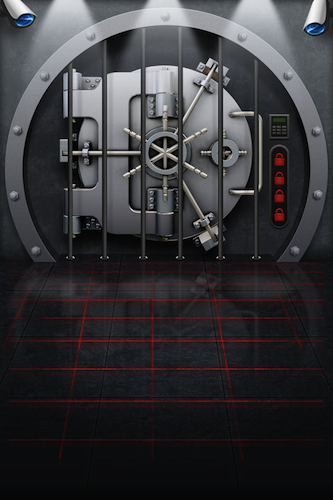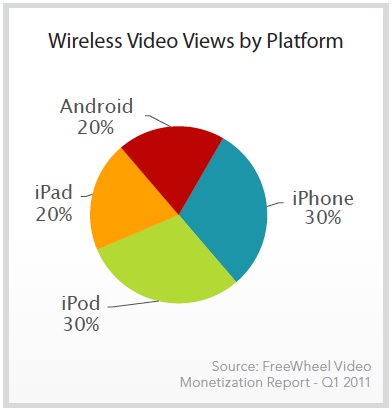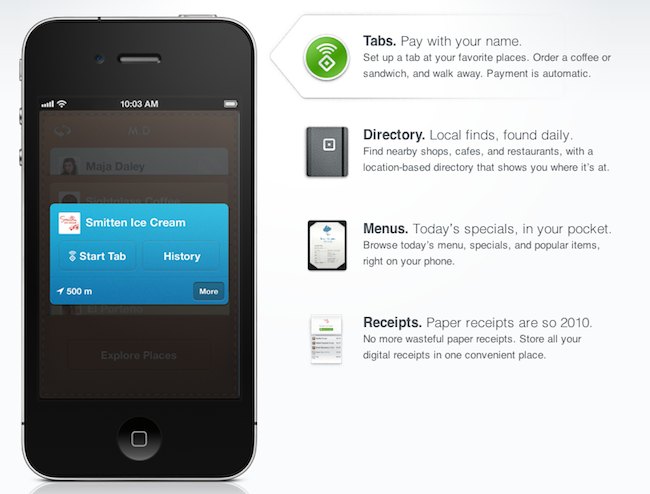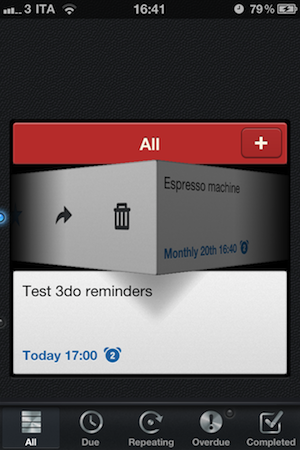Here are today’s @MacStoriesDeals on iOS, Mac, and Mac App Store apps that are on sale for a limited time, so get them before they end!
Posts tagged with "iPhone"
#MacStoriesDeals - Tuesday
MacHeist Releases Official iPhone Game “The Heist”
MacHeist, the website that’s become popular among Mac users thanks to its app bundles, marketing tactics and online “missions” to complete to get access to free software and other gifts, has released today its first official iPhone game, called The Heist. Whilst there’s no official mention of a new MacHeist bundle in the app (but according to the rumors it will come soon, especially considering the latest refresh to the website’s homepage and multiple hints), the app features a “secret vault” you have to crack to earn a “valuable prize” that awaits you at the end – and we’re not saying what it is just yet to spoil all the fun.
To crack the vault and beat the game, in fact, you’ll have to solve 60 different puzzles organized in 4 types which, in pure MacHeist style, are intricate and complicated enough to keep you engaged for a good couple of hours. The game features Game Center integration with 19 achievements to earn, as well as lots of hints and easter eggs that remind us of a new MacHeist coming out sometime in the future. For instance, the tap tap tap developers managed to include a fake phone call from “Sophia” that totally mimics the Phone.app interface, letting you think that you’re getting an actual phone call from MacHeist. It’s all in the details.
You can download The Heist at $0.99 from the App Store. Check out more screenshots below. Read more
Spotify Adds Play Queue to iPhone App
Following a recent redesign that brought a completely new look and clean design to the mobile app and an update to the desktop application which enabled sync for iPods and a variety of other perks for Premium subscribers, Spotify announced another minor update for the iPhone app this morning, finally bringing the much desired “queue” functionality and a new action bar to quickly share songs and add them to playlists.
Whilst there’s still no version for iPad available – but we know they’re working on it – the latest Spotify for iPhone allows you to add a song to the play queue and listen to it as soon as the song that’s currently playing is over. As you build your queue, Spotify will keep adding songs on top of each other, letting you choose which songs you want to listen to without constantly going back to a playlist and hit the play button. Unfortunately, it looks like there’s no queue management interface just yet, and the only sign of animation I could find is the album artwork that “flies” onto the Now Playing button when you add a song to the queue. But other than that, I couldn’t find a screen specifically detailing my existing queue.
Another new feature is the Twitter-like swipe bar that contains buttons to star a song, add it to a playlist, jump to an artist or album page, and queue. The design is very nice and I think this will make me save a lot of time when starring songs and checking out artist profiles on Spotify.
The Spotify iPhone app is available for free in the UK App Store. Get it here.
Report: iOS Devices Streaming 80% of Mobile Video
Freewheel, a video monetization startup, is reporting that Apple is dominating mobile video – 80 percent of it. FreeWheel said in its Q1 2011 report that the majority of video views are occuring on Apple’s iPad, iPhone and iPod Touch. The iPhone and iPod each grabbed about 30 percent of all mobile video views while the iPad grabbed 20 percent; the remaining 20 percent belonged to Android devices. Everything else accounted for less than 1 percent of all video views on mobile devices.
FreeWheel attributes Apple’s dominance in mobile video to the early lead the company has had in the mobile video market with their line of iOS devices. They also believe that greater viewership on Apple devices represents the adoption of video publishers and mobile developers who build their apps / videos for iOS devices first before moving to other platforms. Despite having sold just 20 million tablets worldwide, the iPad already accounts for 20 percent of videos viewed on mobile devices, according to FreeWheel. GigaOM said in their article that “We thought the iPad would be an ideal device for viewing video when it was announced, but the extent to which it has been embraced by even traditional video producers and distributors speaks to the power of the platform. TV networks like ABC and HBO have built applications for the iPad, as have pay TV operators like Comcast, Time Warner Cable, Cablevision and others.”
While mobile video viewing accounts for only one percent of all online video views, much of it is driven by news and live events. Mobile views peaked during the Japanese tsunami / earthquake crisis and also during the NCAA Men’s College Basketball March Madness Tournament. This makes sense because much of the Japan / basketball events happened during “working hours” when viewers turned to their smartphones and mobile devices because they couldn’t watch TV at work.
The 20 percent that the iPad gets is the biggest stat in my opinion; most people don’t take their iPad with them everywhere they go, like an iPhone or iPod Touch. Most people use it after working hours, and to have that 20 percent is outstanding. [via GigaOM]
#MacStoriesDeals - Monday
Here are today’s @MacStoriesDeals on iOS, Mac, and Mac App Store apps that are on sale for a limited time, so get them before they end!
Square Unveils “Card Case” and “Register” To Reinvent Digital Payments and Wallets
Mobile payment company Square teased last weekend they had some big announcements to make this morning. After the 2.0 update to the iPhone and iPad application that hit the App Store earlier today, Square’s Jack Dorsey announced with a live stream event on TechCrunch Disrupt a few minutes ago the next-generation of payment processing for merchants and mobile payments for customers: Square Register and Square Card Case, two new products aimed at revolutionizing the mobile payment scene and the whole concept of digital wallet.
With 500,000 card readers shipped across the United States and $1 billion gross payment volume, Square undoubtedly changed the way people thought of phones and tablets as point of sale units capable of receiving credit card payments with a simple swipe. But Square wanted to go one step further, and allow everyone, merchants and customers, to get rid of cumbersome cash registers, POS devices and wallets altogether by unifying the Square experience into a single software that takes care of the data, personal information, credit cards on file, location, and more. The Card Case is the first step to allow customers to forget about wallets, cash and credit cards to carry around all the time: within a single iPhone application, users are getting access to a virtual wallet that contains place-specific cards to pay, check out products, and get receipts. TechCrunch explains:
Once you’ve downloaded your mobile Card Case, you can fill your case with ‘cards’ of all the merchants you visit and buy from who accept Square. When you click on an individual merchant’s card, you’ll be able to see a map of where the merchant is located, contact information, your own order and purchase history, and receipts with the merchant and a daily live menu of items or services from the merchant. You’ll also be able to see what other customers are buying at the store, and merchants can serve customized offers to specific customers based on their purchase history.
So here’s where things get interesting. In a merchant’s card within the case, you can press a “use tab” button which allows the frequent customer to essentially put a purchase on their virtual tab with Square at the merchant. So once you press that button within two blocks of the merchant, you’ll be able to tell the cashier your name and your card will be charged on the merchant’s backend Square register. Because you are a repeat customer, Square already has your payment information. The purchaser will then receive a push notification when the merchant processes the payment.
The Card Case basically acts as a wallet to keep all the places you frequently visit together and set up tabs so payments will be processed automatically without even swiping a real credit card. In a video reel showcased by Jack Dorsey at the announcement event, a Square user was shown entering a coffee shop, ordering a cappuccino and simply asking the cashier to put it under his name. No swiping necessary, no need to sign any receipt or carry a wallet around – just an iPhone. After a purchase however, the app of course handles virtual receipts emailed or texted to you, so you’ll be able to organize all your expenses and view the places where you spent your money. The concept’s really simple and disruptive from a user standpoint – as long as you have an iPhone and the credit card on file, it’s as simple as walking into a bar and ordering what you want with your name. The software takes care of the rest.
On the merchant’s end, Square has also announced a new product, the Register, which will dramatically improve the way business owners used to deal with POS machines and real cash registers and engage with customers as well. Merchants have always been able with the Square reader to store customers information and send them a receipt via email or SMS; with today’s update, merchants get the possibility to send customers a link to download the Card Case app so next time payments will happen faster, over the air, and with more features to engage with a local shop and nearby places that support Square. Again, it all comes together with the reader used to set up a credit card for the first time, the iPhone app for customers to pay with their mobile device, and the iPad Register for merchants to check out analytics and customer data. From the website:
- Transform your iPad into an elegant point of sale. Customize it with product photos, prices, and sortable categories. Accept cash and credit cards.
- Swipe a card, let customers sign directly on the screen, and send them an email or text message receipt. Customers can add a tip as they sign.
- Know how many cappuccinos you sell each day. Download full reports that give you insight into your sales patterns and inventory.
- Let your regular customers set up a tab right from their phone and pay with their name. Publish your menu and share daily specials.
At this point, it’s clear Square isn’t a cool startup with a neat credit card gadget anymore. Square wants to disrupt mobile payments, bringing merchants and customers together socially, locally, just with software, phones and tablets. Square Register and Card Cases are rolling out today through 50 US merchants in New York City, San Francisco, Washington DC, St. Louis, and Los Angeles.
Zootool for iPhone Collects Your Visual Bookmarks
Zootool, a visual bookmarking platform I had the chance to review when it first came out almost two years ago, has launched an official app a few weeks ago in the App Store, taking the full Zootool experience to the iPhone. If you’re already a Zootool user, you know what to expect from the service: Zootool allows you to collect anything from the web anytime and anywhere thanks to a series of bookmarklets that are capable of grabbing images and videos, as well as entire webpages to save as bookmarks in your account; accounts can be either public and private, with the former option allowing you to share your web discoveries with other Zootool users, a vibrant community that collects cool inspirational resources and links from around the web. Items in your “zoo” can be tagged and collected in packs, plus the service, unlike other bookmarking tools like Pinboard and Delicious, adds a whole visual layer to saved websites and files thanks to inline previews for everything. Zootool is highly visual, and the iPhone app is the perfect replacement for the web browser while you’re on the go.
The main screen gives you access to your bookmarks, the public timeline of people you follow, your profile and active / popular / featured users. Users can be followed in-app, you can check out their recent “lasso catches”, and all entries and links to other web profiles (like Twitter). Entries from others can be copied and opened in Safari, viewed inline or added to your collection; Zootool for iPhone provides the same editing interface of the web app to modify tags, descriptions and links, but the developers also went as far as adding a new bookmarklet built specifically for Mobile Safari that will help you save images and pages from the browser. In the “Your Zoo” view, the app allows you to view all your entries, items organized by packs and tags. Youtube videos can’t be viewed inline as in the web app, but everything else performs exactly as you would expect from Zootool, only it’s been ported to a native app. One cool thing I’ve noticed: if a URL is in your clipboard, Zootool will automatically detect it and ask you to add it to your Zoo.
Zootool for iPhone is a great example of how a full-featured web app should be brought to a smaller screen. The app is elegant, fast, gorgeous to look at and retains all the functionalities seen on the web. You can download Zootool for iPhone at $1.99 from the App Store.
#MacStoriesDeals - Friday Night!
Here are today’s @MacStoriesDeals on iOS, Mac, and Mac App Store apps that are on sale for a limited time, so get them before they end!
3do: A Reminder App with a 3D Twist
There’s no shortage of reminder apps on the iPhone: from the excellent Due app that also works on the iPad with Dropbox synchronization of alerts and tasks to Notificant, a cloud solution that fires off notifications on iOS devices, Macs and web browsers, one could say reminder apps are the new Twitter clients or GTD apps of the App Store ecosystem. As the iPhone is always with us, being able to be easily reminded of important things has become a priority for iOS software developers. 3do, a new app by Cleversome, aims at reinventing the mobile notification space by offering an innovative interface based on swipe gestures that, instead of forcing you to switch between multiple screens to get your alarms and due dates going, allows you to do everything in one screen thanks to beautiful 3D animations within a single menu.
3do is made of two screens: the reminders you set up, and the settings, accessible with a pull-up gesture from the main screen. Think of Twitter’s popular pull-to-refresh gesture, only applied at the bottom and aimed at opening a new window. It works pretty well, though it may be unintuitive at first. The easiest way to get how 3do works is by adding a new reminder: tap the + button, and begin typing to add a description. Once the reminder is written down, swipe on it to rotate the view and get to another menu with icons to mark a reminder as complete or favorite, share it via email or SMS, or delete it. If you swipe again on the reminder, the view rotates a second time to reveal the alarms you can assign, and I deeply appreciate the fact that you can set up two by default – say one 15 minutes before and one “on time.” But there’s more: keep swiping and the cube rotates to show due settings like “due once”, “due daily”, “due weekly” and “due monthly”, which are pretty useful to create repeating timers and reminders for the future. One last swipe, and the 3D view gets you back to the original screen. Is 3D a gimmick in 3do? Maybe, but at least it works well. I’ve been beta testing the app, and whilst there’s no doubt the whole thing has fancy effects to capture your attention, I believe using animations to save space and put everything in a single window is actually quite clever. Like I said, using 3D effects surely isn’t “necessary”, but in this app is functional to the main purpose.
3do has also got an intelligent implementation of alarm notifications and snooze options. Besides letting you assign multiple alarms and due dates, when a reminder is due you’ll get the standard iOS notification that brings you to app; but once a reminder nears its overdue time, 3do displays a menu telling you that’s the last alarm, and you can choose to set up a new one in 15 minutes, 1 hour, 2 hours, or just mark it as complete.
You can download 3do at $4.99 from the App Store. The app might be a little pricey for the average iOS user looking for a simple reminder solution that works across devices (3do doesn’t have iPad or web counterparts at the moment), but if you’re looking for an innovative way to manage and schedule reminders on the iPhone 3do has got you covered. Check out more screenshots below. Read more










